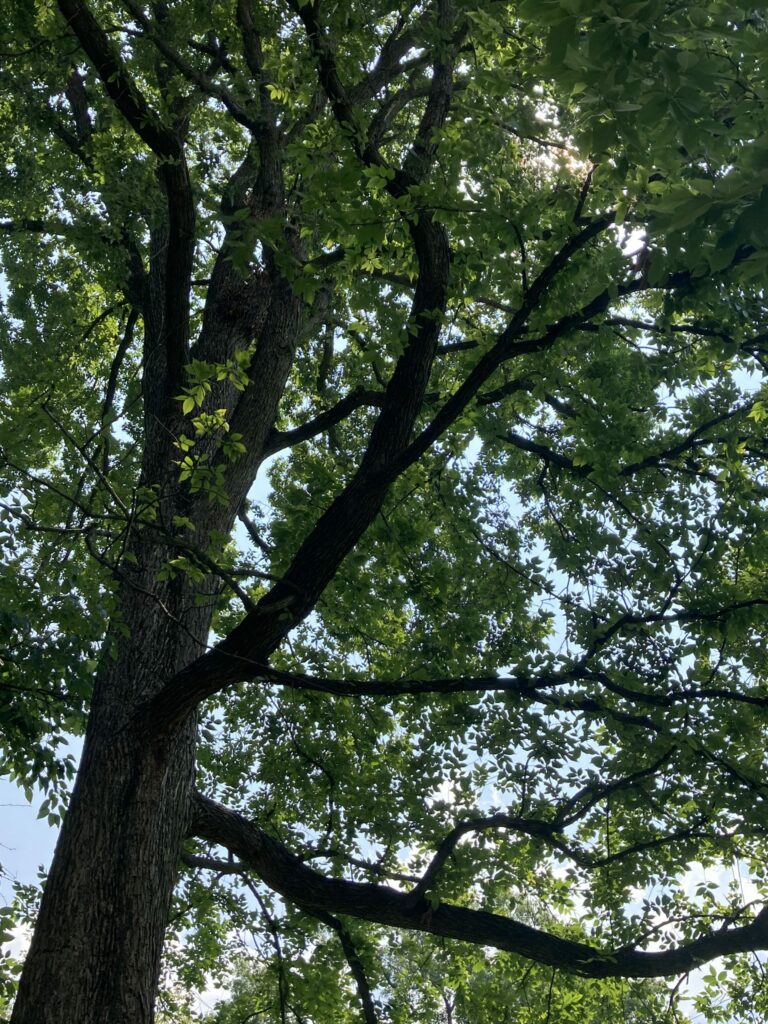By: Mark Halpin, Forestry Manager
Rock elm, Ulmus thomasii, is uncommon in the forests of Missouri and hasn’t been sold in the nursery trade in over 100 years. It somewhat resembles the winged elm (Ulmus alata) that is more common in Missouri, both having corky ridges on their branches known colloquially as “wings”. Rock elm becomes much more common to the north, especially in Michigan where it was formerly a prized lumber species. Unlike the famous landscape elms such as the American elm (U. americana) and the disgusting Siberian elm (U. pumila, a disease-ridden, short-lived, invasive ogre of a tree) which can easily grow several feet in a year, rock elm is a very slow grower and can thrive in rocky soil, on limestone bluffs or in heavy clay. This leads to not only very dense timber, but a curiously interlaced grain that makes its wood nearly impossible to split.
This is an enviable trait for many lumber applications. Rock elm was prized for shipbuilding, especially the wooden battleships of the 19th century, and the smaller wood it yielded was a favorite (even above hickory) for axe handles. It was even used for hubs and spokes on car wheels, as terrifying as that may seem (when your car tops out at 16mph it’s probably much less of a concern). Like so many uncommon, slow-growing species, rock elm was harvested into obscurity in the early 20th century, and now exists mainly as a curiosity in various botanical gardens and arboreta. It lacks the “fountain” or “vase” shape common to the more famous elms and tends towards a narrower form, but this along with its stronger wood makes it much less prone to branch failures. It is nonetheless a gorgeous tree that manages to be graceful in its ruggedness.
Like all of the North American elms, it is highly susceptible to Dutch Elm Disease (DED). This, the most famous of tree diseases, is a fungus spread by a bark-feeding beetle. In sensing its presence, the tree begins plugging its vascular system with tyloses to contain the spread. It is this plugged vascular system that causes death – the tree is forced to kill itself. From its introduction in 1928 to the present day over 75% of the North American elms have died from it. However, to quote Michael Dirr, “people somehow have the notion that all of the American Elms were destroyed. This is by no means true.” American elms (of various species) still commonly arise from seed in wild areas and often attain very impressive size, particularly when located far from human habitations. Various elm populations have proven to be resistant which has led to their propagation as cultivars – ‘Princeton’ and ‘Valley Forge’ being two common ones.
Specimen elms, provided they are not already infected, can be treated with the arboreal equivalent of an intravenous injection: small holes are drilled into the cambium at set intervals around the tree’s base and fungicide slowly fed into its vascular system. (The chemical used, Tiabendazole, is also approved for internal use in humans and animals and is an approved food additive commonly applied to fruit, so environmental dangers are likely low – it appears to only harm fungi.) Regular treatments on a 2-3 year cycle can keep a tree disease free for a lifetime, and the cost is well justified by the benefits a large stately elm provides.




